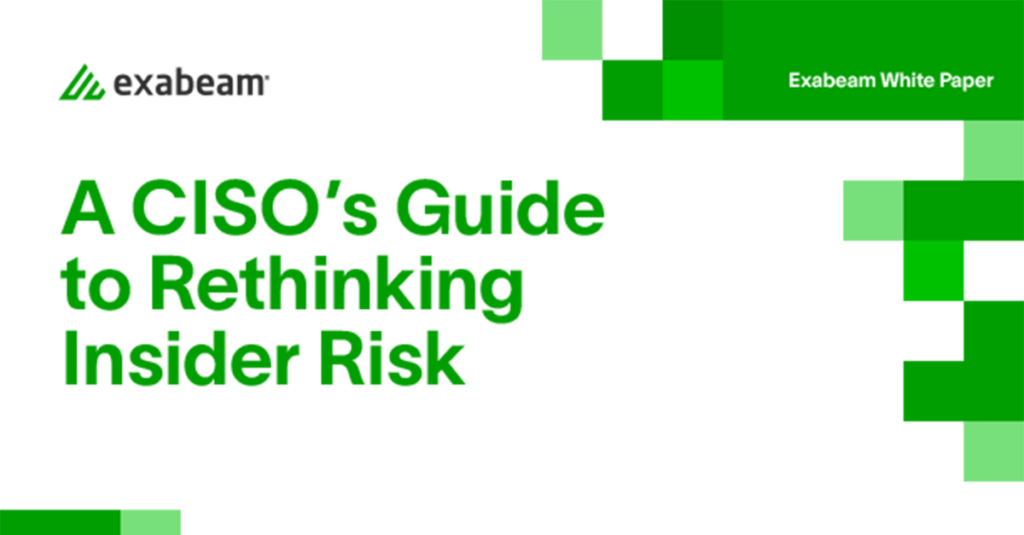
- Home >
- Blog >
- InfoSec Trends
The Insider Threat Dilemma: Why It Matters More Than You Think
- Jun 14, 2023
- Heidi Willbanks
- 3 minutes to read
Table of Contents
The cybersecurity landscape is ever-changing, and as organizations invest more in external threat prevention, many are overlooking a critical vulnerability: insider threats. In this blog series, we’ll explore the complex nature of these threats, their prevalence, and the various types of insiders who pose a risk to your organization’s security. Additionally, we’ll delve into key strategies for mitigating insider threats. By the end of this series, you’ll be equipped with valuable insights and practical guidance to help protect your organization from the potentially devastating consequences of insider threats.
In this first post, we’ll examine the prevalence of insider threats, the impact on organizations, and why it’s essential to prioritize this issue in your cybersecurity strategy.
The prevalence of insider threats
The cybersecurity landscape constantly evolves, with businesses confronting numerous external threats. The 2022 Verizon Data Breach Investigations Report reveals that 80% of breaches originate from outside organizations, causing some to underestimate the significance of insider threats. However, these threats cannot be disregarded.
The cybersecurity community acknowledges that internal breaches, measured by the number of compromised records, are more than ten times larger than external breaches. Insider threats pose a considerable and persistent challenge, with a 44% increase in incidents in just two years.
Effectively addressing insider threats calls for comprehensive strategies, including employee training, robust frameworks, behavior-based detection, and automation. A successful approach necessitates collaboration and interdisciplinary efforts that extend beyond security operations. Transparent charters outlining roles and responsibilities strengthen strategies for threat detection, investigation, and response (TDIR).
Understanding the insider threat landscape
Insider threats can be challenging to detect, as they often involve trusted employees or contractors with legitimate access to an organization’s systems and data. These individuals have the potential to cause significant damage due to their intimate knowledge of the organization’s inner workings. Insider threats can be broadly categorized into three types:
- Malicious Insiders (26% of incidents) — Motivated by various factors such as financial gain, grudges, espionage, or opportunism, malicious insiders intentionally harm their organizations. The rise of remote and distributed workforces has made it more challenging to detect and mitigate these threats.
- Negligent Insiders (56% of incidents) — These individuals unintentionally create security risks due to carelessness, lack of training, or failure to follow security policies. The pushback against security protocols or the use of “shadow IT” can exacerbate these issues.
- Compromised Insiders (18% of incidents) — The costliest type of insider incident occurs when an external threat actor compromises an insider’s credentials or internal systems. This blurs the line between internal and external threats, as the outsider is now operating with legitimate insider access.
The impact of insider threats
Although external breaches are more common, internal breaches have a significantly larger median size, compromising more than ten times more records than their external counterparts. This discrepancy underscores the potentially severe consequences of neglecting insider threats. Additionally, insiders have trusted access and can often hide their activities for months or even years, making these incidents harder to detect and increasing their overall impact.
Conclusion
While external threats certainly warrant attention, organizations must not neglect the significance of insider threats. In our next blog post, we’ll explore strategies to mitigate these risks.
Discover insights and strategies to tackle insider threats in your organization in our comprehensive white paper. This essential guide offers valuable information on understanding and addressing insider threats, equipping you with practical tools and frameworks to enhance your organization’s security posture.
You’ll learn about:
- The growing prevalence and impact of insider threats on organizations
- Techniques for securing team buy-in and the importance of training in mitigating insider threats
- Effective ways to track and manage insider behavior using a systematic approach and appropriate framework
- The critical role of collaboration among various departments in handling insider risk
Gain the knowledge you need to effectively rethink and address insider threats. Download the white paper now!


Heidi Willbanks
Senior Product Marketing Manager, Content | Exabeam | Heidi Willbanks is the Senior Product Marketing Manager, Content at Exabeam. She manages content strategy and production for product marketing and supports strategic partners, sales and channel enablement, and competitive content, leveraging her product marketing certification, content expertise, and industry knowledge. She has 19 years of experience in content marketing, with nearly a decade in the cybersecurity field. Heidi received a BA in Journalism with a minor in Graphic Design from Cal Poly Humboldt and was awarded Outstanding Graduating Senior in Public Relations Emphasis. She enjoys reading, writing, gardening, hiking, yoga, music, and art.
More posts by Heidi WillbanksLearn More About Exabeam
Learn about the Exabeam platform and expand your knowledge of information security with our collection of white papers, podcasts, webinars, and more.
-
 Blog
Blog
How Behavioural Analytics Strengthens Compliance with Australia’s Protective Security Policy Framework (PSPF)
-
 Blog
Blog
Seeing the Invisible: Visualizing and Protecting AI-Agent Activity with Exabeam & Google
- Show More

